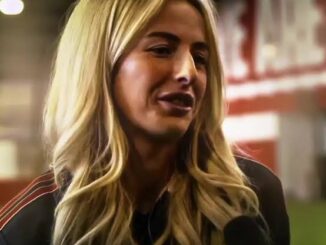
Why Chloe Kelly Will Miss Three Games for Arsenal.
It has emerged that Chloe Kelly is set to be unavailable for three fixtures for Arsenal — a blow for the Gunners’ attacking options. Here’s what we know so far, and why her absence could matter.
The Injury Update
Arsenal officially confirmed that Kelly returned from England duty early to begin rehabilitation on a foot injury. The club stated she would not participate in England’s upcoming matches, emphasizing that the focus is now on her recovery at club level. While precise medical details haven’t been fully disclosed, insiders suggest the issue is serious enough to justify a multi‑game layoff.
Why Three Games?
The “three games” timeline seems to come from a blend of medical estimation and fixture scheduling. Minor foot injuries — such as stress reactions, bruising, or small fractures — often require 2–4 weeks out, depending on severity, rest, and therapy. Given Arsenal’s upcoming match schedule, a three‑match window could align with that timeline, assuming no setbacks.
Additionally, clubs often build in buffer time — even if a player might feel fit sooner, the risk of relapse is high. The medical staff likely chose three games to allow full rest and gradual reintroduction rather than rush her back. Any return before adequate healing could worsen the injury and extend her absence.
Impact on Arsenal
Kelly’s absence is significant. Over the past months, she has regained momentum and importance within the team after a difficult spell at Manchester City. Her pace, directness, and attacking instincts offer a different dimension to Arsenal’s forward play, particularly in transitions and one‑on‑one situations. Losing her temporarily limits flexibility in attack and could place more burden on other forwards.
Tactically, manager Renée Slegers may need to adjust formation or rely more heavily on squad depth. Forwards like Alessia Russo, Stina Blackstenius, or other wide attackers will likely have to carry extra load. In tight matches, that could influence substitution patterns, pressing strategies, and how Arsenal manage fatigue across competitions.
Risks and Recovery
A key risk with foot injuries is compensatory strain. When a player alters their movement to protect an injured area, secondary issues — in the ankle, knee, or even the opposite side — can arise. The Arsenal medical team will likely adopt a conservative progression: rest, physiotherapy, strength work, and then load management (gradually reintroducing minutes).
Given Kelly’s resilience and experience recovering from setbacks (for instance her recovery after earlier injury struggles in her career), the prognosis is optimistic — but caution is essential.
Outlook & Return
If all goes well, Kelly could return at or around the fourth match from now, offering a boost in key fixtures. Her presence will be especially valuable in tightly contested domestic and European games where momentum and attacking spark matter.
Still, it’s crucial not to rush. The club must balance short‑term gains with long‑term availability. For the next few matches, Arsenal will try to stay competitive without her, but Kelly’s absence will be felt — one hopes for a seamless return when fully fit.



Be the first to comment